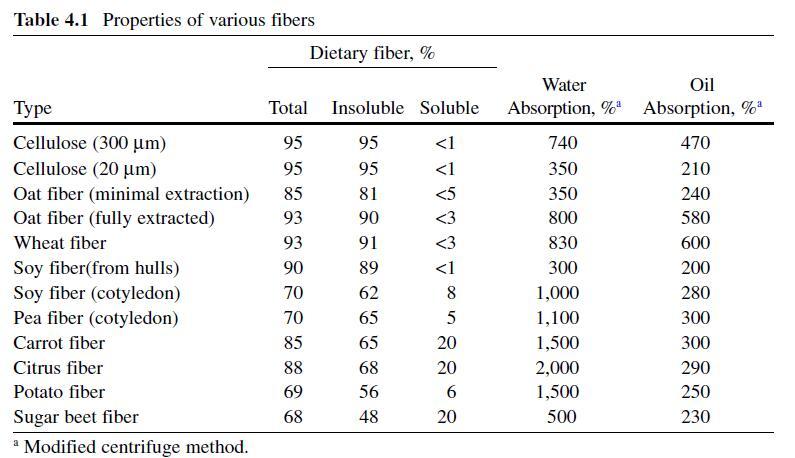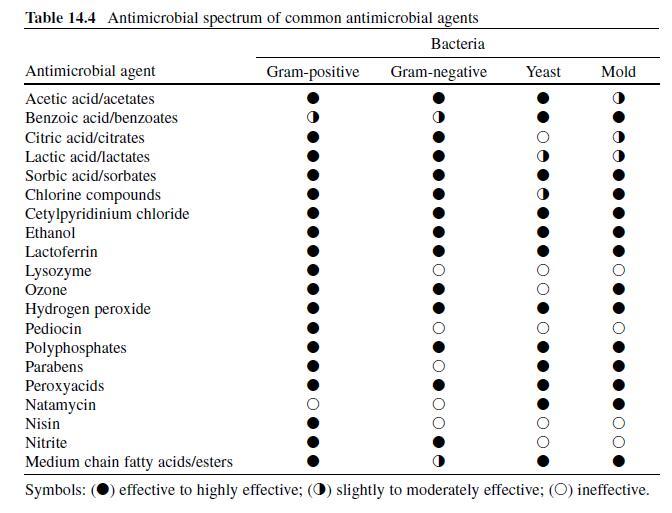Application of Fibers in Meat Products
Mar 10,2022
The existing group of commercially available dietary fiber concentrates display an incredible variation in functionality. In nature they play a role as structural components and aid in the binding or transport of water. These characteristics, along with fat binding and functionality as a fat mimetic, offer interesting concepts for the food industry. Ongoing economic pressure forces meat processors to look for reliable solutions to produce competitive, high-quality, products. This also opens the door for an economic-driven use for most of the fiber concentrates.
During the last 20 years, articles have been published covering low-fat meat products using different fiber types to increase water dosages. In these investigations, the technological and functional diversity of the fiber types has been only partially highlighted. Comparing three existing studies (Aleson-Carbonell, Fernández-López, Pérez-Alvarez, & Kuri, 2005 ; Chang & Carpenter, 1997 ;Steenblock, Sebranek, Olson, & Love, 2001) , totally different systems have been utilized for the commonly described “oat fiber.” With dissimilar fiber extraction levels, variations in water and/or fat binding impacted the results. While two of these research groups applied a traditionally produced bran, Aleson-Carbonell et al. (2005) utilized oat bran containing higher β -glucan content to push the health aspects of the soluble fiber fraction. From a nutritional point of view it was a noble intent, but the low fiber content in oat bran makes it very difficult to reach adequate nutritive fiber levels without serious detrimental effects on the product’s organoleptic properties. Another crucial attribute is the fiber particle size.
Fibers from different sources exhibit varying degrees of water binding and holding.
Based on fiber content and structure, citrus and wheat fiber display the highest
water absorption and inulin the lowest. Potato and pea fiber show high values, due
to their significant starch and protein content. A disadvantage of this digestible
carbohydrate content is recrystallization and, consequently, water leakage in vacuum-
packaged products. In addition to water binding and juiciness, other essential
quality factors are graininess, springiness, hardness, and cohesiveness. Chang and
Carpenter (1997) showed that insoluble fibers, like bran, and added water have
complementary effects on springiness, hardness, and cohesiveness of frankfurters.
However, large fiber particle sizes and increased dose levels led to increased graininess.
Since the early 1990s, several new fiber ingredients with better organoleptic
properties than bran have been launched. Nevertheless, sandiness is still an issue for
several cellulosic fibers. Dose levels up to 1.5% are generally possible without
creating sandiness. Customized milling and advanced lignin extraction can also
improve the organoleptic profile of cellulosic fibers. In the case of citrus fiber, the
cellulose and pectin combination, combined with a high-extraction production
process, creates a nice round mouthfeel, but high price and low pH values limit its
usage level. The combination of cellulosic fibers with a low dose of psyllium is a
good option. Psyllium’s extremely high-water-binding and gel properties could aid
in overcoming the sandiness of cellulosic fibers. Higher psyllium dosages are a
challenge, since further water binding continues to occur during storage. This
makes it difficult to control the texture and structure of the processed meat product
throughout its storage life. A second disadvantage of psyllium is that it melts during
reheating and releases a brownish, slimy purge.
Combinations of fibers with hydrocolloids also offer a potential solution for low-fat meats (Tokusoglu & Ünal, 2003) . A commercial product line introduced in Europe takes this approach. It utilizes a patented (Christensen & Mogensen, 1995) combination of ingredients (modified or native starches plus dietary fibers) and a defined preparation process. An example of this product line, shown in Fig. 4.2 , uses a combination of fiber, starch, and carrageenan.
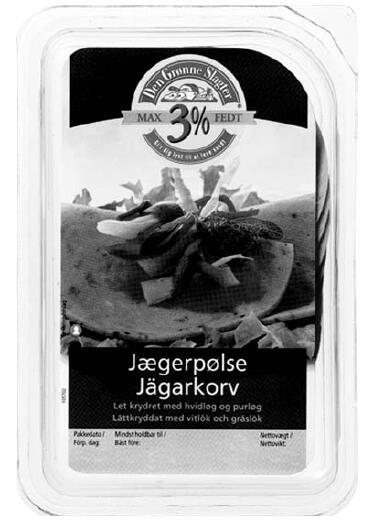
Fig. 4.2 The Den Grønne Slagter product line contains 3% fat and relies on a combination of modified starch, potato fiber, and carrageenan. Ingredient line for product Jægerpølse (shown in figure): Lean pork meat (52%), water, modified gluten-free starch , salt, potato fiber , acid regulating component (sodium lactate), stabilizer ( carrageenan ), spring onion, antioxidant (sodium ascorbate), garlic extract, dextrose, spice extracts, glucose syrup, preservatives (sodium nitrite ) (courtesy of Tulip Food Company, Randers, Denmark. Reproduced with permission).
Nutritionally Enhanced Processed Meat Products
Nutritionally functional food concepts have been considered for some time. Consumer demand for these products has been increasing, spurring new and more creative developments. Based on their technological functionality and nutritional benefits, fibers can be used, either alone or in combination with other ingredients, for fiber enrichment, as sources of prebiotic fiber, to improve calcium uptake, to reduce fat, saturated fat, and/or cholesterol, to reduce salt or phosphate, and to enable the use of plant oils rich in omega three fatty acids. Unfortunately, current US regulations limit health claims in processed meats, thus limiting the potential application of fibers primarily to fat and cost reduction. The European market, however, has already seen the launch of several of these more advanced concepts, with fat reduction, as well as fiber enrichment and other benefits.
These functional food concepts include a wide range of ideas, where the nutritive as well as the technological properties of fibers are very useful. Two of these strategies highlight the idea of replacing or reducing added salt or phosphates. The current impetus to reduce sodium levels across processed foods poses a particular challenge for the meat industry, given the key functional role of salt in meat systems, as it relates to protein solubilization and water binding (Chap. 1). Because of the peculiar challenge this poses, many different approaches to reduce sodium in processed meats have been attempted. The use of high-water-binding fiber concentrates constitutes one more tool to address this important issue. A comparable strategy can be discussed in processed meats for phosphate reduction. Due to concerns that the modern human diet contains excessive amounts of phosphorus, attempts have been made to replace phosphates in meat products. Unlike phosphates, fibers are not able to work at the molecular level on the actin–myosin complex, but their high ability to bind water and improve texture can help achieve partial phosphate replacement in different types of processed meats.
In addition to aiding in fat replacement and calorie reduction, some soluble fibers have the ability to bind bile acids in the small intestine, thus blocking their recycling through the ileal mucosa and forcing their excretion in the stool. The body is, consequently, forced to consume more cholesterol to regenerate the lost bile acids. As in the previously mentioned German product, animal fat may be partially or totally replaced by more polyunsaturated vegetable oil. In these instances, insoluble fibers may help stabilize the product batter and avoid fatting out. To achieve the best fat binding, these fibers could be premixed with the oil. The recipe below demonstrates a German “healthy” cooked poultry sausage concept developed by the company J. Rettenmaier und Söhne. It illustrates the combined use of soluble and insoluble fibers, poultry white meat, carbonate as a cutter process aid, and vegetable fat.
The second German recipe, a 65% fat-reduced Wiener sausage with a 65% fat reduction, contains 10% fat and enough fiber to permit the use of the claim “source of dietary fiber,” based on the requirements of the Codex Alimentarius (Codex Alimentarius Commission, 2007) . For fat replacement, two different concepts are possible. The first option involves the use of a combination of different fibers to avoid the labeling of E numbers, while the second option takes advantage of the functionality of cellulose gum and colloidal microcrystalline cellulose. With either application, high-shear force equipment is essential to open the co-processed particle structure and achieve the needed dispersion. Preactivation of the fiber alone with shear could be done, but it is also possible to achieve the same result by adding the fiber blend at the beginning of the chopper step. The mechanical shear in the bowl chopper is normally adequate to fully activate the gel from the inulin or colloidal microcrystalline cellulose. The activated fat replacer exhibits thixotropic behavior, and resembles the mouthfeel of fat and provides juiciness.
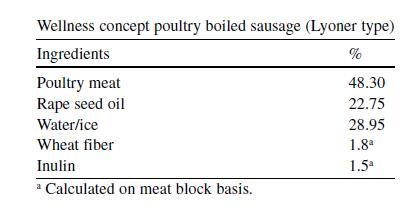
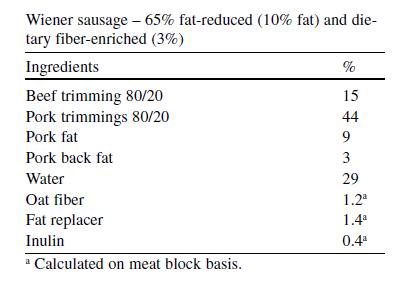
Process Implementation of Fibers
Most fiber concentrates have a strong tendency to bind and hold water, which allows them to influence, or even modify, production parameters. Regardless of the manufacturing equipment used, the following must be considered and controlled: fiber hydration time, fiber dispersion in the meat batter based on mixing or comminution time, handling or timing during production, protein solubilization, batter extensibility, batter viscosity, temperature control, emulsion stability, cooking and smoking yields, and peelability. In the case of high-water-binding and holding fibers, an adequate fiber:water ratio is crucial to sufficiently hydrate the batter components; otherwise the meat matrix could be too dry and its process temperature could rise faster than expected. In low-water environments, the stickiness of soluble fibers, like pectin, could make it difficult to disperse them since they show a strong tendency to lump. Some fibers or fiber systems require a pretreatment, usually with shear, to achieve their full technological potential.
Wherever fibers are added in the process, it is critical that they be well dispersed in order to gain maximum technological benefit. Fibers can be added either in combination with other ingredients or functional seasoning compounds, or in a single step at the beginning or end of comminution or mixing. The process timeline may need to be adjusted based on physical energy input from the blender, cutter, or the brine agitation. Another consideration is whether the process is continuous or in batches.
- Related articles
- Related Qustion
- Types of Dietary Fiber Mar 10, 2022
Dietary fiber is the edible parts of plants and analogous carbohydrates that are resistant to digestion and absorption in the human small intestine with complete or partial fermentation in the large intestine.
Dietary fiber is the edible parts of plants and analogous carbohydrates that are resistant to digestion and absorption in the human small intestine with complete or partial fermentation in the large intestine.....
Mar 10,2022Chemical MaterialsAcetic or ethanoic acid is a monocarboxylic acid which occurs naturally in plant and animal tissues and is also a byproduct of ethanol oxidation by Acetobacter , Gluconobacter and other heterofermentative strains of lactic acid bacteria.....
Mar 10,2022Food AdditivesYou may like




